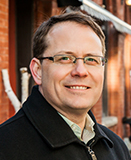Part onehttps://en.m.wikipedia.org/wiki/Ontario_general_election,_2018
The Ontario general election of 2018 was held on June 7, 2018, to elect the 124 members of the 42nd Parliament of Ontario.[1] The Progressive Conservative Party of Ontario, led by Doug Ford, won a majority government with 40.5% of the vote. The Ontario New Democratic Party, led by Andrea Horwath, formed the Official Opposition. The Ontario Liberal Party, led by incumbent Premier Kathleen Wynne, lost official party status in recording both the worst result in the party's 161-year history and the worst result for any incumbent governing party in Ontario. The Green Party of Ontario won a seat for the first time in their history, while the Trillium Party of Ontario lost its single seat gained by a floor-crossing during the 41st Parliament of Ontario. Twenty-four other parties and numerous independent candidates also received votes.
Ontario general election, 2018
← 2014 June 7, 2018 43rd →
← outgoing members
elected members →
124 seats of the Legislative Assembly of Ontario
63 seats needed for a majority
Opinion polls
Turnout 58.4% (
 7.1pp)
7.1pp)Leader Doug Ford Andrea Horwath
Party Progressive Conservative New Democratic
Leader since March 10, 2018 March 7, 2009
Leader's seat Etobicoke North Hamilton CentreThe Ontario general election of 2018 was held on June 7, 2018, to elect the 124 members of the 42nd Parliament of Ontario.[1] The Progressive Conservative Party of Ontario, led by Doug Ford, won a majority government with 40.5% of the vote. The Ontario New Democratic Party, led by Andrea Horwath, formed the Official Opposition. The Ontario Liberal Party, led by incumbent Premier Kathleen Wynne, lost official party status in recording both the worst result in the party's 161-year history and the worst result for any incumbent governing party in Ontario. The Green Party of Ontario won a seat for the first time in their history, while the Trillium Party of Ontario lost its single seat gained by a floor-crossing during the 41st Parliament of Ontario. Twenty-four other parties and numerous independent candidates also received votes.
Contents
Background
Redistribution of seats
The Electoral Boundaries Act, 2015[2]increased the number of electoral districts from 107 to 122, following the boundaries set out by the federal 2013 Representation Order for Ontario, while preserving the special boundaries of the 11 seats in Northern Ontario set out in the 1996 redistribution.
The Far North Electoral Boundaries Commission, appointed in 2016,[3]recommended the creation of the additional districts of Kiiwetinoong and Mushkegowuk—James Bay, carved out from the existing Kenora—Rainy River and Timmins—James Bay ridings, which accordingly raised the total number of seats to 124.[4][5] This was implemented through the Representation Statute Law Amend
Seats before 27 18
Seats won 76 40
Seat change
 49
49  22
22Popular vote 2,324,742 1,925,512
Percentage 40.50% 33.56%
Swing
 9.25pp
9.25pp  9.81pp
9.81pp

Leader Kathleen Wynne Mike Schreiner
Party Liberal Green
Leader since January 26, 2013 May 16, 2009
Leader's seat Don Valley West Guelph
Last election 58 seats, 38.65% 0 seats, 4.84%
Seats before 55 0
Seats won 7 1
Seat change
 48
48  1
1Popular vote 1,124,381 264,094
Percentage 19.59% 4.60%
Swing
 19.06pp
19.06pp  0.24pp
0.24pp
Popular vote by riding. As this is an FPTP election, seat totals are not determined by popular vote, but instead via results by each riding. Riding names are listed at the bottom.
Premier before election
Kathleen Wynne
Liberal Premier-designate
Doug Ford
Progressive Conservative
Contents
BackgroundEdit
Redistribution of seatsEdit
The Electoral Boundaries Act, 2015[2]increased the number of electoral districts from 107 to 122, following the boundaries set out by the federal 2013 Representation Order for Ontario, while preserving the special boundaries of the 11 seats in Northern Ontario set out in the 1996 redistribution.
The Far North Electoral Boundaries Commission, appointed in 2016,[3]recommended the creation of the additional districts of Kiiwetinoong and Mushkegowuk—James Bay, carved out from the existing Kenora—Rainy River and Timmins—James Bay ridings, which accordingly raised the total number of seats to 124.[4][5] This was implemented through the Representation Statute Law Amend

